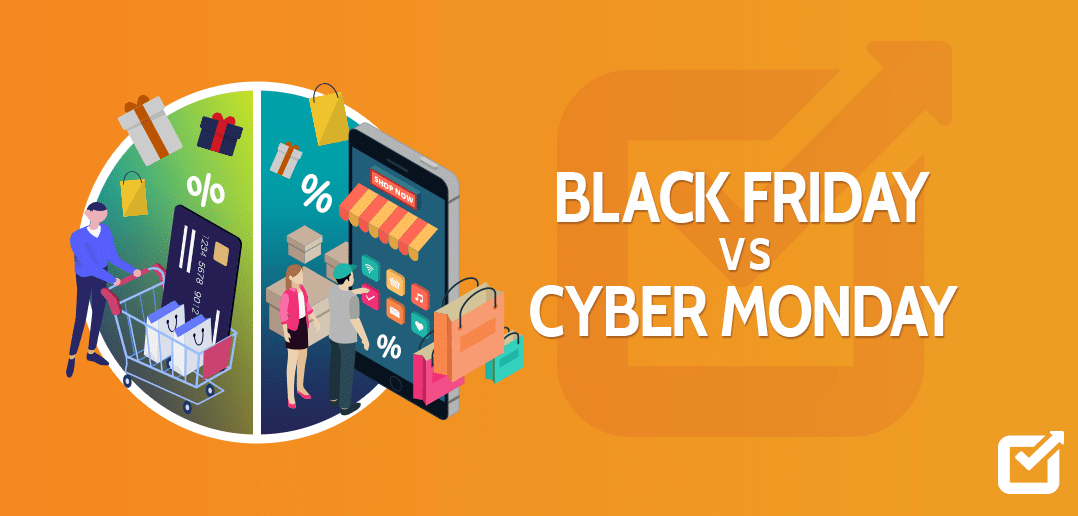Why do some brands become household names, effortlessly entering the minds of consumers, while others vanish? The answer, both now and in the past, is “brand awareness strategy.” But making a strategy that connects with your audience can be challenging. It combines creativity, careful planning, and a deep knowledge of the online world, where it’s very hard to grab people’s attention.
Building a brand isn’t just about using catchy phrases in important meetings or putting your logo everywhere. It means making a real connection, standing out from the competitors, and guiding people to find you online. Integrating social media analytics into your brand awareness strategy is a powerful way to strengthen your brand’s online presence and connection with your audience.
Get ready to explore brand awareness thoroughly, from the basics to more advanced strategies that help your brand stand out. We’ll provide real examples, expert advice, and six actionable steps.
What Is a Brand Awareness Strategy?
A brand awareness strategy in 2024 is a crucial part of a company’s marketing work. It’s designed to help people easily recognize and remember the brand. This plan includes different parts of branding and marketing to make sure that the brand catches people’s attention and stays in their memory, influencing them when they decide to buy something.
Don’t Let Your Brand Get Lost In The Noise
Easily monitor your social media activity in one place. See your progress through weekly and monthly graphs and download ready-to-show PDF & PPT reports directly from a single dashboard!
Why Is Brand Awareness Important?
Brand awareness is crucial for business growth and success. It goes beyond just making sure people know your brand’s name; it’s about making your brand a familiar and trusted name that sticks in people’s minds, influences their choices, and builds a loyal relationship. Understanding the importance of brand awareness can help businesses stand out in competitive markets.
Making Your Brand The First Choice
Creating a marketing strategy to increase brand awareness plays a big role in why customers pick one product over another. When it’s time to buy, people tend to go for brands they know and like. Being familiar with a brand makes customers feel more comfortable choosing it, as they see less risk in trying something from a brand they recognize.
Earning Customer Trust And Loyalty
The journey to earning customer trust starts with brand awareness. Consistently showing your brand in a good light helps build a reliable image. This reliability turns into loyalty over time, with customers coming back for more and even recommend your brand to others.
Winning More Of The Market
Being well-known among consumers lets a brand take a bigger slice of the market. Brand awareness lays the groundwork for businesses to stand out, draw in more customers, and stay ahead of competitors.
Standing Strong Against Competitors
In a world full of competition, brand awareness can protect established brands from new challengers. Brands that are already well-liked and trusted find it easier to keep their position, especially in uncrowded markets.
Brand awareness is key to a brand’s lasting success and its ability to face competition. By realizing its value and working on strategies to make the brand more visible and memorable, businesses can sway customer choices, earn loyalty, and secure a leading spot in the marketplace.
Related Article: How to Develop a Brand Strategy?
5 Brand Awareness Strategy Examples Reshaping 2025
Netflix

Netflix Netflix has skillfully created a brand awareness strategy that people around the world instantly recognize, making it a top choice for streaming shows and movies. Its red and black colors, simple ‘N’ logo, and catchy phrase “Watch anywhere, Cancel anytime” all work together perfectly.The colors make Netflix look exciting and high-quality, while the ‘N’ logo is easy to spot and remember, giving off a modern vibe. The slogan speaks directly to what viewers want: ease and the freedom to choose. These branding choices help Netflix fit seamlessly into people’s daily routines, making it their first choice for entertainment.By matching its brand so well with what its viewers are looking for, Netflix stands out from the competition and builds a strong connection with its audience; that’s how marketing strategy for brand awareness should lead to loyalty and success.
Airbnb

AirBnB We should learn how to create a brand awareness strategy from Airbnb. Airbnb has cleverly made itself a leading name in travel and the sharing economy. The company’s logo, inspired by San Francisco, where Airbnb started, isn’t just a design; it reflects Airbnb’s fresh take on travel.
The brand’s ‘Belong Anywhere’ slogan travelers feel at home, no matter where they are. This approach sets Airbnb apart from traditional travel options and appeals to those looking for genuine and personal travel experiences.
The idea of inclusivity and finding a home-like place everywhere you go is at the heart of the ‘Belong Anywhere’ message. These branding choices have greatly helped Airbnb become well-known, linking it closely with today’s way of traveling and sharing resources.
As Airbnb grows and brings more to the table, its strong brand identity—built around the distinctive ‘A’ logo and welcoming message—keeps it at the forefront of changing how we travel.
Warby Parker
Warby Parker has changed the brand awareness strategy in selling glasses by cutting out the middleman and selling directly to customers online. This smart move lets them offer trendy, high-quality eyewear at much lower prices. Their friendly and relatable brand makes customers feel important and listened to.
A big part of what makes Warby Parker special is its promise to give away a pair of glasses for every pair it sells. This effort helps tackle the worldwide problem of people not being able to see properly because they can’t afford glasses.
It also hits home with shoppers who prefer to buy from companies that help others. By linking their business to a good cause, Warby Parker connects with their customers on a deeper level.
This mix of fresh ideas, caring for customers, and doing good in the world has made Warby Parker a front-runner in the eyewear market. It has earned them a dedicated group of fans and shows that companies can do well by doing good.
Coca-Cola

Coca Cola Coca-Cola is a perfect example of a brand that has lasted for a long time and has become a big part of culture worldwide. Its famous red and white colors, the special ribbon design, and the unique style of writing are not just for looks; they make people feel nostalgic and happy, connecting with everyone, no matter where they’re from.
A lot of Coca-Cola’s success comes from its smart marketing over the years. Through memorable ads, Coca-Cola has become a symbol of joy and coming together.
From Santa Claus drinking a Coke during the holidays to sharing a Coke with someone special, these ads have made Coca-Cola known everywhere.
The company also makes sure you see Coca-Cola in movies, TV shows, and big sports events, keeping the brand in everyone’s mind. This clever brand awareness marketing strategy makes sure Coca-Cola stays popular and keeps growing in the tough global market, showing how important it is to have a strong brand that people feel connected to.
Red Bull

Red Bull Red Bull is more than just an energy drink; it’s become a symbol of extreme sports and adventure. This didn’t happen by chance. Red Bull worked hard to connect its brand with exciting, high-energy activities.
By supporting bold stunts, fun events, and lively festivals, Red Bull has made itself a big part of the extreme sports world. You can see Red Bull involved in everything from base jumping and BMX biking to Formula 1 racing, showing its support for people pushing their limits and following their passions.
By linking itself with extreme sports and adventurous living, Red Bull has built a unique brand awareness strategy that really speaks to its customers. It’s a great example of how a brand can be about much more than its product, creating loyal fans who share the same spirit and values.
Featured Article: Everything You Need to Know About Social Media Branding in 2025
6 Effective Tactics to Increase Brand Awareness
With everything ready and our brand goals clear, let’s switch from just thinking about it to actually doing it. Here are 10 key steps to create a strong brand awareness strategy that can start or refresh your brand in 2024.
Know Thyself: Define Your Brand DNA
Knowing what your brand is all about is the most important step in creating a good plan to make more people aware of your brand. This means you need to really understand what your brand stands for, what makes it special, and what its main values are. To do this, you have to check how your brand is currently seen, research your market thoroughly, and keep an eye on the latest trends to figure out what makes your brand different from others.
Look at Gucci as an example. When Alessandro Michele took over, he changed Gucci’s style in a big way. His bold and unique designs made Gucci popular again. Despite these changes, Gucci stayed true to its original character while also keeping up with what modern customers want.
This wasn’t just by chance; it was because Gucci really understood its own brand identity and used that knowledge to connect with people. Gucci showed that knowing your brand well is crucial for staying relevant and successful in today’s market.
Personify Your Brand
To connect with people today, it’s important to make your brand feel like a person with its own personality. Customers are looking for more than just products; they’re drawn to what the brand represents and the lifestyle it suggests.
Making your brand personable helps create a stronger bond with your audience.
Apple is a great example of this idea in action. It stands out by being innovative, sleek, and cool, traits that are evident in everything from their product designs to their ads.
The ‘Mac Guy’ in their commercials comes across as laid-back and friendly, making Apple feel more down-to-earth compared to other brands. Also, their famous ‘iPod silhouette’ ads show off a trendy and youthful vibe.
These traits are consistent in Apple’s marketing, helping the brand attract attention and build a dedicated following who really buy into what Apple stands for. Apple shows how giving your brand a distinct personality can deeply engage and attract customers.
Tell Engaging Stories
Being great at storytelling is key to making your brand unforgettable. Good stories can capture people’s attention and create a strong emotional link between your brand and your customers, going much further than just talking about what your products do.
When you share your brand’s origins, goals, and beliefs, you turn regular customers into true fans who understand your message and want to support you.
Take Patagonia, the outdoor clothing company, as a perfect example of storytelling done right. They don’t just sell gear; they share their commitment to protecting the environment, which is a big part of what they stand for. Their marketing does more than just try to sell something; it highlights how they’re working towards sustainability and caring for the earth. This honest ‘do what you say’ approach has won them a lot of respect and loyalty from their customers. By really getting involved in environmental causes, Patagonia has created a genuine bond with its audience, showing that good storytelling can not only showcase a brand’s mission but also deeply connect with customers and bring together a community of supporters.
Create An Omnichannel Experience
In today’s world filled with digital options, it’s really important for brands to make sure customers get a smooth and consistent experience, no matter how they interact with the brand – be it online, through an app, on social media, or face-to-face.
An omnichannel approach makes sure that the brand’s message and look are the same everywhere, which not only makes things better for the customer but also helps build a strong brand image and loyalty.
ASOS, a big name in online fashion and beauty shopping, shows how to do this right. They keep their style and messaging the same across their website, app, and social media.
This makes ASOS easy to spot and follow in a very busy market and gives shoppers a hassle-free experience no matter where in the world they are or how they choose to shop. By linking everything they do across different channels, ASOS makes it easier for people to recognize and feel connected to their brand.
This straightforward and united shopping journey not only simplifies buying but also helps create a closer bond between ASOS and its shoppers, showing how valuable a good omnichannel experience is.
Collaborate With Influencers
Using influencers and teaming up with other brands can really help spread the word about what you’re selling and reach new people.
But it’s very important to keep things real. The influencers or brands you work with should really get what your brand is about and connect well with the people you want to reach. This makes sure that these collaborations come off as genuine and meaningful, not just like you’re trying to make a quick sale.
A great example of doing this right is the ‘Travis Scott Meal’ by McDonald’s. They partnered with Travis Scott, a rapper with a big following and a cool image.
By working with Scott, McDonald’s not only gained access to his fans but also made their brand more appealing to a wider and varied group of people. The campaign was insanely successful, showing how choosing the right partners can make your brand awareness strategy more noticeable, attract customers in new ways, and lead to success. It also shows the importance of picking partners that fit well with your brand and speak to your audience.
Stand For Something
Nowadays, people want to support brands that are about more than just making money. They’re drawn to brands that care about social or environmental causes. When a brand supports issues that matter to both them and their customers, it creates a strong bond and sets the brand apart from others.
Lush Cosmetics is a great example of an increasing brand awareness strategy. They’re known for their strong stance against animal testing and their commitment to getting ingredients from ethical sources. This isn’t just something they talk about; it’s part of everything they do, from making their products to advertising them.
Because of this, Lush has not only won over customers who care about these issues but also stands out in the beauty industry. Their dedication to these causes makes them more attractive and shows how being true to what you believe in can help build a loyal customer base and make your brand more successful.
Related Article: Stay True to Your Brand: Conveying Values via Marketing
Conclusion
To sum up, creating a B2B brand awareness strategy in 2024 involves several important steps. You need to really understand who your customers are, use social media smartly, keep your messages clear and true, tell stories that engage people, work with influencers, and stand up for causes that matter.
It’s not just about getting attention; it’s about forming real bonds with your audience. As the world of marketing changes, so should your methods.
By sticking to these six steps, your brand can not only get noticed more but also earn the loyalty and trust of your customers, laying down a solid base for success in the future. In the quick-moving branding world, being up-to-date, sincere, and in touch with your audience is essential.
FAQs
1. What Are the 4 Stages of Brand Awareness?
- Unawareness: At this stage, the potential customer does not know your brand exists.
- Recognition: The customer can recognize your brand, among others, often through visual elements like logos or colors.
- Recall: The customer can remember your brand without visual prompts, associating it with your product or service category.
- Top-of-mind: Your brand is the first one that comes to mind when thinking about a specific product or service category.
2. What Is Brand Awareness With Example?
3. What Are the 3 Ways to Measure Brand Awareness?
- Surveys: Ask your target audience directly about their familiarity and perceptions of your brand.
- Website traffic: Analyzing the number of visitors to your website, especially through direct searches for your brand name.
- Social media metrics: Looking at engagement rates, mentions, and follower counts on platforms where your target audience is active.
4. What Are the Goals of Brand Awareness?
- Creating familiarity with your brand among potential customers.
- Building a positive image and reputation.
- Differentiating your brand from competitors.
- Encouraging loyalty and repeat business.
- Ultimately increasing sales and market share.
5. What Are the 4 V’s of Branding?
- Value: What you offer that provides benefit to your customers.
- Vision: The long-term goals and aspirations of your brand.
- Voice: The unique tone and style of your brand communication.
- Visuals: The visual elements like logo, color scheme, and design style that represent your brand.
6. What Are the 2 Parts of Brand Awareness?
- Brand Recognition: The ability of consumers to identify your brand under different conditions, as reflected by their ability to identify your brand’s logo, tagline, packaging, etc.
- Brand Recall: The ability of consumers to retrieve your brand from memory when given a product category, need, or purchase occasion without being directly exposed to the brand’s name or logo.














